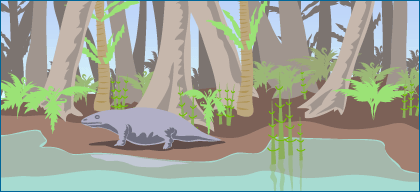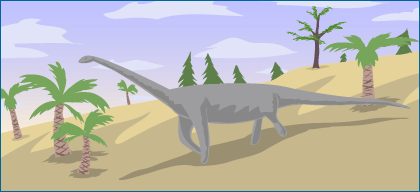We all know that things change — but in terms of Earth’s history, things have really changed. Life has originated, evolved, diversified, and, in most cases, gone extinct. Continents have arisen, broken apart, and collided. Mountain ranges have formed and eroded. Even the make-up of the atmosphere has changed.
Today, carbon dioxide levels are rising — but how do today’s levels compare to those of the past? These snapshots will help put it in perspective:
- 430 million years ago: When most life lived in the oceans and plants were first invading the land, carbon dioxide levels were ten to twelve times higher than today!
- 300 million years ago: After land plants diversified, lush forests and diverse plant communities crept across the Earth. These plants sucked up carbon dioxide from the atmosphere, leading to carbon dioxide levels slightly lower than today.
- 175 million years ago: The “Age of the Dinosaurs” was generally warm and humid, with carbon dioxide levels three to five times higher than today.
- 140 million years ago: Flowering plants first evolved and diversified in an environment that probably had moderately high carbon dioxide levels — perhaps twice those of today.
- 65 million years ago: Since the non-avian dinosaurs went extinct, carbon dioxide levels have been steadily decreasing — that is, up until the recent past…
So in comparison to much of Earth’s history described above, modern carbon dioxide levels are relatively low. However since the industrial revolution, humans have been releasing greenhouse gasses in mass quantities, increasing the level of carbon dioxide in the atmosphere. Currently, human activities are causing carbon dioxide levels to change more rapidly than volcanoes, asteroids, or anything else in Earth’s 4.5 billion year history. In fact, if we keep to our current practices, we will cause carbon dioxide levels to double by the end of this century — a level of carbon dioxide unprecedented for all of human existence and the past 50 million years!
Learn more about greenhouse gases on the Understanding Global Change site.




